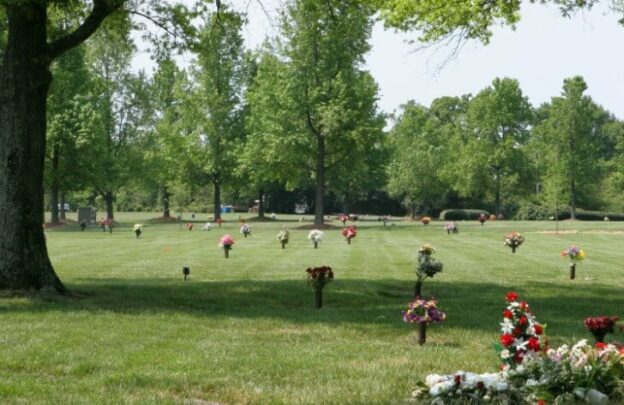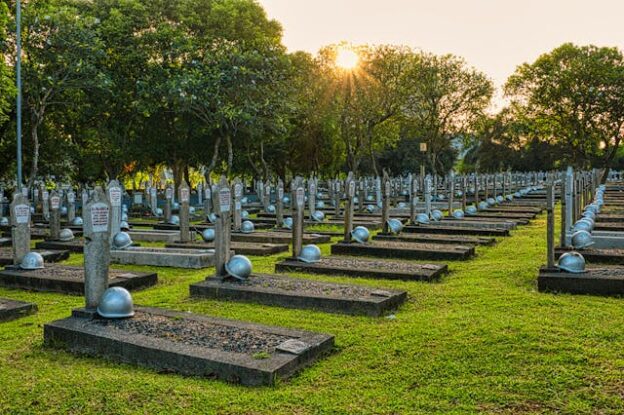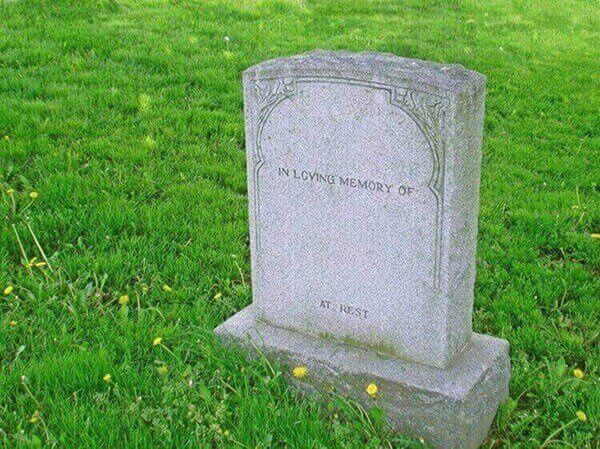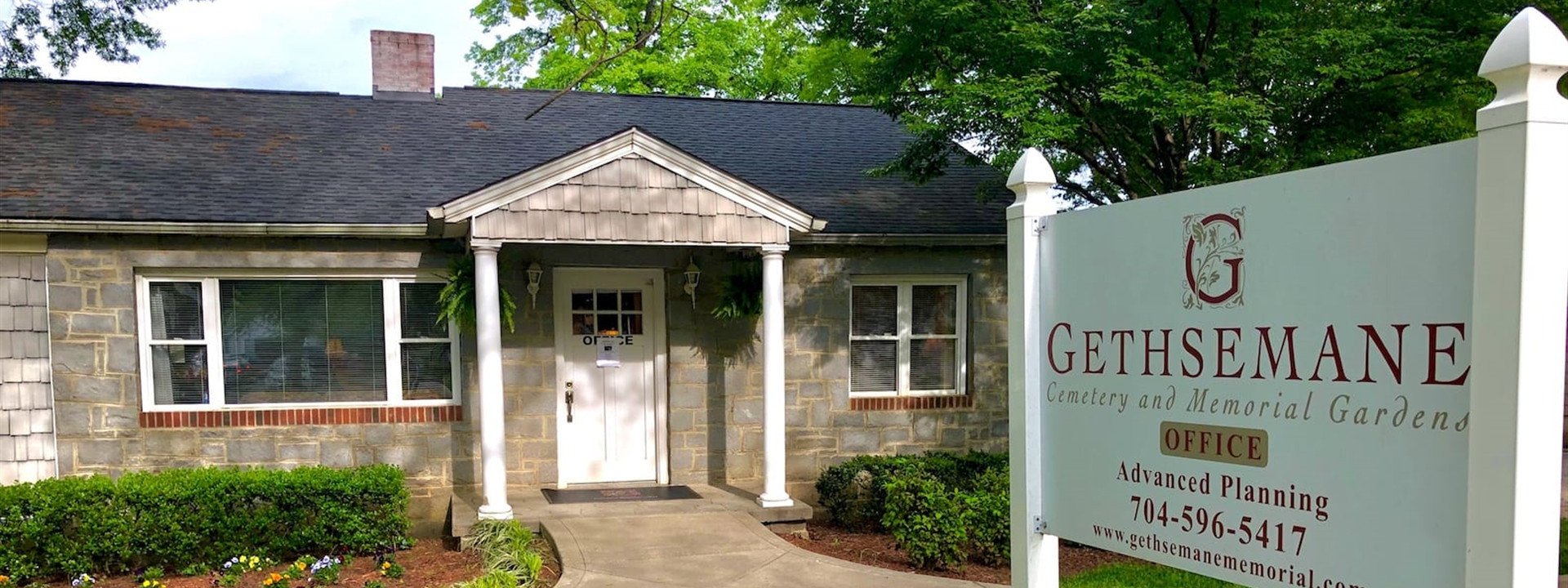Tag Archives: Charlotte NC cemeteries

The Benefits of Planning Ahead and Pre-Purchasing Cemetery Plots
In the tapestry of life’s planning, few threads are as delicate and yet as crucial as making arrangements for our final resting place. Charlotte, NC cemeteries stand as serene guardians of memories, where the past meets the present in a quiet celebration of life. Pre-purchasing a cemetery plot is not just an act of foresight; it’s a gesture of love and care for those we will someday leave behind.
The Value of Planning Ahead
Emotional Solace: Making arrangements for a cemetery plot in advance offers emotional peace of mind to both you and your loved ones. It alleviates the burden of decision-making during times of grief, allowing families to focus on healing and remembrance.
Financial Prudence: Economically, pre-purchasing allows you to secure today’s prices for a future need, protecting against the inevitable rise in costs due to factors like inflation and demand in Charlotte, NC. Cemeteries offer various payment plans, making this option both affordable and practical.
Personal Choice: Choosing your final resting place offers a chance to express your preferences and values. Whether it’s a location with a special meaning, the type of plot, or proximity to loved ones, pre-purchasing gives you control over these important decisions.
The Process Simplified
Research and Reflection: Begin with introspection about what matters most to you in a final resting place, followed by research into Charlotte, NC, cemeteries. Consider factors like location, amenities, and the types of plots or memorials they offer.
Consultation and Comparison: Reach out to cemetery administrators to gather more information and arrange visits. Comparing options helps in making an informed decision that resonates with your wishes and budget.
Decision and Documentation: Once you’ve selected the right cemetery and plot, the next steps involve finalizing the purchase and ensuring all agreements are documented. This includes understanding maintenance and care provisions to ensure your resting place remains a testament to your life and legacy for generations.
Peace for Today, Preparation for Tomorrow
The decision to pre-purchase a cemetery plot in Charlotte is more than just a transaction; it’s an act of kindness towards yourself and those you love. It reflects a thoughtful approach to life’s cycle, ensuring that when the time comes, your legacy is honored according to your wishes, and your family is spared from the stress of making these decisions amidst grief.
Community Connection: Charlotte, NC, cemeteries are more than just spaces for eternal rest; they are vibrant communities that celebrate life, history, and legacy. By choosing to plan ahead, you’re also choosing a place in this community, rooted in the rich tapestry of Charlotte’s heritage.
A Sustainable Choice: Beyond the immediate benefits, pre-purchasing plots contribute to the sustainability of cemetery spaces, allowing for better planning and preservation of these sacred grounds. It ensures that Charlotte’s cemeteries remain beautiful, serene, and well-maintained sanctuaries of remembrance.
Joining Hands with Tomorrow
 As we walk the path of life, taking steps to secure a final resting place is a profound act of foresight that mirrors our love for life and those who share it with us. Charlotte, NC cemeteries offer a sanctuary not just for those who have passed but for the living – a place of peace, reflection, and connection.
As we walk the path of life, taking steps to secure a final resting place is a profound act of foresight that mirrors our love for life and those who share it with us. Charlotte, NC cemeteries offer a sanctuary not just for those who have passed but for the living – a place of peace, reflection, and connection.
If you’re considering pre-purchasing a cemetery plot, Gethsemane Cemetery and Memorial Gardens invite you to explore the serene beauty and tranquil spaces of our cemetery. Together, we can ensure that your final wishes are honored, providing peace of mind for you and your loved ones. Reach out to us for more information and take the first step towards a future filled with peace and preparation.

Preparing for a Cemetery Burial Service to Ensure a Memorable Farewell
Preparing for a cemetery burial service to ensure a memorable farewell is a process that requires thoughtfulness, sensitivity, and a deep understanding of the emotional and logistical complexities involved. At one of the distinguished Charlotte, NC cemeteries, we are committed to offering a service that not only honors the memory of your loved one but also provides a comforting and supportive environment for those left behind. Recognizing the significance of this final farewell, we emphasize dignity, respect, and personalization in all our services.
Immediate Burial Services: A Prompt and Respectful Farewell
The loss of a loved one can be sudden and unexpected, leaving families with the daunting task of arranging a respectful farewell in a limited time. Our immediate burial services are designed to ease this burden, offering a straightforward and dignified option. Our team is ready to swiftly handle all necessary arrangements, ensuring that your loved one is laid to rest with the utmost respect and care.
Graveside Services: Personal Touches for a Meaningful Goodbye
Graveside services offer a more intimate setting for families and friends to come together and honor the memory of the deceased. Set against the serene backdrop of the cemetery, these gatherings allow for personalized tributes, such as selected readings, favorite music, and custom ceremonies that reflect the unique spirit and life of the departed. This personalization ensures that the service is not only a farewell but a celebration of the individual’s life and legacy.
Memorial Services: Celebrating a Life Well-Lived
Our memorial services provide a versatile platform for families to celebrate the life of their loved one. Whether through catered receptions, multimedia tributes, or storytelling, we facilitate a space where memories can be cherished and legacies honored. These services allow for a broader expression of grief and remembrance, accommodating the diverse ways in which people choose to remember and celebrate their loved ones.
Burial Options: Honoring Every Legacy
Understanding the importance of choice in honoring your loved one, we offer a range of burial options. From traditional in-ground burials to above-ground mausoleums, each option is curated with care, respect, and consideration for the wishes of the deceased and their families. Our goal is to provide a fitting and dignified final resting place that respects the legacy and preferences of every individual.
The Funeral Procession: A Final Tribute
The funeral procession represents the last journey of the deceased, a profoundly symbolic moment that offers a chance to honor their life in a meaningful way. Our selection of vehicles, including traditional hearses and elegant carriages, allows families to choose a mode of transport that best reflects the personality and life of their loved one. This final tribute is a poignant reminder of the journey we all share and the individual paths we take through life.
Reliable Support for Every Step of the Journey
 Our dedication to the Charlotte, NC, community remains steadfast as we constantly seek to refine and improve our services, aiming to offer comfort and support in times of grief. By combining empathy, professionalism, and meticulous attention to detail, we are committed to assisting you through the intricate process of organizing a cemetery burial service at our esteemed cemetery in Charlotte, NC. We ensure that your farewell is not just a memorable tribute but also a step toward healing.
Our dedication to the Charlotte, NC, community remains steadfast as we constantly seek to refine and improve our services, aiming to offer comfort and support in times of grief. By combining empathy, professionalism, and meticulous attention to detail, we are committed to assisting you through the intricate process of organizing a cemetery burial service at our esteemed cemetery in Charlotte, NC. We ensure that your farewell is not just a memorable tribute but also a step toward healing.
Gethsemane Cemetery and Memorial Gardens invite you to reach out for more information on how we can assist you in crafting a farewell that honors your loved one in a way that is both meaningful and personal. Our doors are always open to those in need of compassionate support and expert guidance during this challenging journey.

Finding Peace of Mind Through Online Cemetery Preplanning
In the swiftly moving currents of modern life, the practice of preplanning for life’s unavoidable events has evolved into a higher level of thoughtfulness and anticipation. For local residents, the option of online preplanning at Charlotte, NC cemeteries, serves as a reassuring guide, delivering tranquility and certainty in the process of commemorating loved ones. This approach underscores the significance of being prepared, allowing families to thoughtfully and leisurely choose final resting places and services within the serene confines of their own homes.
The Essence of Preplanning
Preplanning is essentially about giving oneself and one’s family the gift of time and thoughtfulness. It alleviates the burden on loved ones during times of grief and ensures that final wishes are respected and fulfilled. This thoughtful process allows for a celebration of life that is reflective of the individual’s values and desires, making it an integral part of the grieving and healing journey.
A Sanctuary of Peace and Reflection
At the core of our community, a distinguished cemetery offers a sanctuary of peace and reflection. Known for its empathy, professionalism, and decades-long commitment to families, this memorial garden encapsulates a serene environment where memories are treasured and legacies honored. Its online preplanning services are designed to provide a seamless, respectful experience, ensuring meticulous attention to every detail.
The Value of Preplanning Services
The digital approach to preplanning democratizes the process, making it accessible and straightforward. It empowers individuals to explore options, ask questions, and make informed choices regarding plots, monuments, or services. Beyond logistical arrangements, preplanning is about crafting a lasting tribute that mirrors the unique life and essence of the departed, offering families a profound sense of solace and connection.
Navigating Life and Loss with a Trusted Partner
In the complexities of life and loss, the significance of having a trusted partner cannot be overstated. We stand committed to guiding our community through these moments with compassion and respect. By embracing online cemetery preplanning, you afford yourself and your loved ones peace of mind, knowing that final wishes will be honored with the dignity they deserve.
We warmly invite you to explore this meaningful journey towards creating a final tribute that resonates with love, honor, and timeless memory. As we advance into the digital age, let’s seize the opportunity to celebrate life and legacy in the most respectful and meaningful manner. Preplanning with us not only eases the burden on families during challenging times but also ensures that every life is commemorated in a manner echoing peace, love, and remembrance.
A Thoughtful Journey Ahead
 Preplanning embodies a thoughtful journey that offers profound tranquility, guaranteeing the meticulous fulfillment of last wishes. Advancing with the digital resources available to us, we reinforce our pledge to offer the families a planning process through Charlotte, NC cemeteries, that is not only impactful but also comforting. Opting for online preplanning signifies a pivotal move in celebrating life and legacy with utmost grace and honor.
Preplanning embodies a thoughtful journey that offers profound tranquility, guaranteeing the meticulous fulfillment of last wishes. Advancing with the digital resources available to us, we reinforce our pledge to offer the families a planning process through Charlotte, NC cemeteries, that is not only impactful but also comforting. Opting for online preplanning signifies a pivotal move in celebrating life and legacy with utmost grace and honor.
For more information or to start this essential planning process, please don’t hesitate to reach out to Gethsemane Cemetery and Memorial Gardens. Together, we can craft a tribute that stands as a lasting emblem of love and memory, ensuring your legacy or that of your loved ones is preserved for generations to come.

Benefits of Pre-Planning with the Ideal Cemetery
Pre-planning cemetery arrangements is a thoughtful way to ease the future burden on loved ones, ensuring that your final wishes are honored and providing peace of mind for yourself and your family. The benefits of this process are numerous and profound. Engaging with the ideal Charlotte, NC cemeteries for pre-planning purposes allows individuals to take their time to consider all options, including location, type of memorial, and financial planning. It means making informed, unhurried decisions that align with personal values and family traditions. Gethsemane Cemetery and Memorial Gardens offer a compassionate and respectful setting for these important considerations, assisting clients through the process with empathy and expertise.
By tending to arrangements in advance at a preferred cemetery, one can personalize the finer details while alleviating potential stress on family members during a time of loss. This foresight also locks in current prices, safeguarding against the rise in costs over time. Moreover, pre-planning is an act of love, a final gift to those you hold dear, sparing them from making difficult decisions under emotional distress. It’s about taking control, leaving a legacy, and resting assured that when the time comes, everything is in place—exactly as you envisioned, at a place like Gethsemane Cemetery and Memorial Gardens, synonymous with dignity and serenity.
Peace of Mind Through Pre-Planning
Pre-planning one’s final resting place with an ideal cemetery offers immeasurable peace of mind, both for oneself and for family members. It allows for thoughtful decisions without the pressures that often accompany a time of grief. Making these choices in a calm and reflective atmosphere ensures that personal preferences are communicated and respected, thereby eliminating guesswork for surviving relatives and ensuring that one’s final wishes are fulfilled with precision and care.
Financial Benefits and Price Protection
Financial foresight is one of the prime advantages of pre-planning with a cemetery. By planning ahead of time, you can take advantage of today’s costs, effectively shielding your family from the effects of inflation. Pre-payment plans further extend the benefit of managing your budget on your terms, allowing you to allocate funds gradually and prevent the financial burden from falling on your loved ones unexpectedly.
Personalizing Your Legacy
The act of pre-planning empowers you to personalize your legacy in a way that reflects your life story. From the choice of memorials to the selection of a plot that resonates with your spirit, pre-planning opens the door to creating a personal and meaningful tribute. It gives you the ability to set the tone for how you want to be remembered, ensuring that every detail honors the unique life you’ve led.
Alleviating Emotional Stress for Family
By pre-planning with a cemetery, you significantly alleviate the emotional burden that can overwhelm your family during a time of mourning. With the major decisions already taken care of, your loved ones are spared from the stress of making arrangements and can focus on their healing journey. This compassionate foresight minimizes potential conflicts and brings solace knowing that everything is arranged according to your wishes.
Navigating the Process with Expert Guidance
Choosing to pre-plan with a reputable cemetery often means you have access to expert guidance throughout the entire process. Cemetery professionals are well-equipped to answer your questions, offer recommendations based on experience, and assist in laying out the blueprint for your eternal place of rest. Their support transforms what could be an overwhelming process into a manageable and meaningful experience, providing reassurance that no detail will be overlooked.

Embracing the process of pre-planning with Charlotte, NC cemeteries bestows profound benefits, and Gethsemane Cemetery and Memorial Gardens stands committed to guiding you through every step. This thoughtful preparation is a compassionate act, ensuring that your final wishes are honored while providing the gift of solace and certainty to loved ones. It leaves behind a legacy of care, showcases the epitome of personalization, and captures the essence of responsibility by choosing the ideal resting place well ahead of need. Please don’t hesitate to reach us for immediate assistance.

Reflecting on Engagements at Our Esteemed Veterans Cemetery
Reflecting on the profound experiences at our cherished veterans’ cemetery invokes a deep sense of gratitude and remembrance. These hallowed grounds provide a serene backdrop for honoring the brave individuals who selflessly served our nation, allowing us to pay homage to their memories in a respectful and meaningful way. Gethsemane Cemetery and Memorial Gardens stand as a symbol of dignity and peace in Charlotte, NC cemeteries, where veterans and their families find solace amongst the meticulously maintained landscapes and tranquil settings. Here, we gather to reflect on the valor and sacrifices of these distinguished men and women, filled with a mix of sorrow for their absence and pride for their commendable service to our country.
It is a privilege for the community to come together in these solemn moments, sharing stories that resonate with the spirit of camaraderie and the bonds forged in times of challenge. The veterans’ cemetery is more than just a final resting place; it is a testament to the lasting impact that these individuals have had on the fabric of our society. In every corner of the grounds, there’s an unspoken narrative of heroism that inspires us to hold dear the freedoms we enjoy. The cemetery offers a space for thoughtful reflection and a platform to express our collective admiration for those who answered the call of duty with unwavering courage.
Honoring Service and Sacrifice
In the quiet corners of our veterans’ cemetery, we honor the service and ultimate sacrifice of those who have defended our nation. These hallowed grounds, rich with solemn dignity, encourage reflection and offer a tangible connection to the past. Every marker tells a story of courage, a life dedicated not to personal glory but to the greater good, weaving an enduring narrative through the fabric of our country’s heritage. When we walk these paths, we walk in gratitude, mindful of the cost of the freedoms we hold dear.
The Role of Personal Reflection
Reflecting at veterans’ cemeteries allows individuals a personal space to connect with history and the stories of the fallen. It’s a poignant reminder of the fragility and valor of life, prompting visitors to pause and remember the human stories behind the uniform. Whether one stands in silence or shares memories with others, these cemeteries offer a place for contemplative engagement, inviting us to grapple with the complexities of service and the debts we owe to those who bore their duties with honor.
Ceremonies That Unite
Throughout the year, veterans’ cemeteries become the focal point for ceremonies that unite communities. From Memorial Day to Veterans Day, these gatherings reinforce our collective memory, bridging generations through shared stories of heroism. Each ceremony – be it a wreath-laying, the playing of “Taps”, or the presentation of colors – is a unique opportunity to engage with our history and show solidarity with the families of the service members we seek to honor.
Educational Impacts and Legacy
Veterans’ cemeteries are not only sites of remembrance but also powerful educational tools. They invite students, researchers, and the curious to delve into the annals of history, to unearth the rich tales of bravery and the somber realities of war. These engagements help to ensure that the baton of legacy is passed on and that the sacrifices made will continue to enlighten future generations about the price and responsibilities of freedom.
Community Support and Healing
In times of loss, veterans’ cemeteries serve as a beacon for community support and healing. They are spaces where empathy and care are manifested in the collective mourning and honoring of those who have served. For families and friends, engagement in these settings can provide a sense of peace, a moment to reflect not only on what was lost but also on the enduring bonds of love and respect that continue to unite those left behind. Such engagement fosters a communal embrace that can ease the solitude of grief, offering solace in the shared experience of homage and the collective will to never forget the valor and commitment of our nation’s veterans.

In conclusion, our engagements at Charlotte, NC cemeteries, specifically at the reverent Gethsemane Cemetery and Memorial Gardens, enable us to forge a profound connection with the past and present. These encounters, brimming with heartfelt respect, remind us of the collective duty we have to honor the sacrifices made for our liberty. Through each visit, ceremony, and moment of silence, we acknowledge the magnitude of service rendered by our veterans, ensuring that their legacies are celebrated, their stories preserved, and their contributions to our nation’s history forever held in the highest esteem. We’re at your service, reach out to us today.

Key Benefits and Highlights of Pre-plan Burial
Deliberating upon one’s end-of-life arrangements can be a deeply personal and thoughtful process. Pre-plan burial offers numerous advantages that ensure peace of mind and provide clarity during what can be a tumultuous time for loved ones. In Charlotte, NC cemeteries, where every detail is meticulously considered, electing to pre-plan can relieve families of the burden of making decisions amidst grief and can secure financial stability by locking in current rates. Gethsemane Cemetery and Memorial offers the compassionate guidance needed to navigate these choices, helping individuals to arrange a dignified and fitting tribute to their lives.
Opting for pre-plan burial also opens the door to personalized services that resonate with an individual’s unique life story. It allows one to express their wishes clearly, ensuring that their legacy is honored in a manner they find most meaningful. Moreover, it encourages open conversations with family, providing them with the comfort of knowing that they are fulfilling their loved one’s final wishes. As a forward-thinking approach, pre-planning at venues like Gethsemane Cemetery and Memorial also allows for the selection of specific memorial elements, leaving a legacy that reflects the individual’s values and life philosophy.
Reducing Emotional Strain for Loved Ones
Pre-planning a burial is a compassionate choice that can significantly reduce the emotional burden on loved ones during a period of loss. By making thoughtful arrangements in advance, you spare your family from making quick decisions under stress, allowing them to focus on their healing journey and coming together to support one another. This initiative-taking step eliminates guesswork, providing clear direction that honors the true wishes of the decedent. As a result, relatives are granted a sense of solace, knowing that they are conducting a ceremony that truly reflects what their loved one wanted, creating a heartfelt farewell.
Financial Certainty and Cost Control
One of the most pragmatic aspects of pre-plan burial is the financial certainty it provides. Locking in services at current rates safeguards against the rising cost of funeral expenses over time – a relief to anyone concerned about the economic impact on their estate or their loved ones’ well-being. By addressing these costs ahead of time, individuals can select options that fit their budget without compromising on the dignified remembrance they envision. This foresight allows for an organized approach to end-of-life financial planning, often including flexible payment options, which contribute to a sense of empowerment and financial accountability.
Personalizing the Legacy
The freedom to personalize one’s own memorial service and final resting place is the most profound benefit of pre-plan burial. This personalized approach ensures that the final tribute reflects the individual’s personality, beliefs, and life story. From selecting the location and type of memorial to choosing readings or music, these decisions form a legacy that speaks to the unique individual they were. Additionally, the act of planning can inspire meaningful conversations with family and close friends, creating an opportunity for shared understanding about one’s values and wishes. This results in a deeply personal and authentic celebration of life, resonating with all who attend and remember.

In summary, the key benefits of pre-plan burial in Charlotte, NC cemeteries underscore the importance of planning. They offer not just the advantage of emotional and financial relief for families, but also the dignity of shaping one’s legacy. At Gethsemane Cemetery and Memorial, individuals could thoughtfully reflect on the significance of their lives, making decisions that resonate with their values. This enduring act of love and foresight ensures that final wishes are respected, providing a serene and structured path for those who will continue to honor their memory. Please connect with us today so we can assist you.

Pearls of Wisdom on Visiting a Cemetery Respectfully
Visiting a final resting place is a tradition that transcends time, culture, and geography. It is a profound act of remembrance, reflection, and respect. As we step into the hallowed grounds of Charlotte, NC cemeteries, it is essential to carry with us the pearls of wisdom that dictate the etiquette and reverence these sacred spaces command. Gethsemane Cemetery and Memorial Gardens, known for its tranquil beauty and meticulous upkeep, encourages visitors to embrace the solemnity of the cemetery with a mindful presence and poise that honor the dignity of those interred and the feelings of other visitors sharing the space.
Understanding the sanctity involved in visiting a cemetery is crucial. It begins with recognizing that each marker, each inscription, tells a story worthy of our silent contemplation. A respectful demeanor, from muted conversations to considerate movements among the memorials, shows acknowledgment of the loss others have suffered and the love they continue to bear. As a repository of history, legacy, and personal narratives, Gethsemane Cemetery and Memorial Gardens ask for a reflective approach. Visitors are invited to not just pass through but to engage with the environment in a way that leaves a lasting, positive imprint on both the heart and the hushed landscape they traverse.
Honoring the Sanctity of Sacred Grounds
When entering the gates of a cemetery, we cross a threshold into a place where every step should be measured not just in distance, but in reverence. It is important to recognize that these spaces are steeped in respect for the departed. Walking gently along the pathways, maintaining quietude, and being mindful of the surrounding memorials are small acts that uphold the solemn atmosphere. These gestures of respect ensure the serenity of the cemetery is preserved for all visitors, reflecting a universal veneration for life.
Embracing the Quietude of Remembrance
Cemeteries are landscapes of memory, where silence speaks louder than words. Maintaining composure and speaking softly honors the peaceful ambiance that is cherished by those who come to reflect and remember. This is a place for quiet contemplation, and visitors are encouraged to uphold this ethos. Moments of silence offer a bridge to the past and a gesture of solidarity with those who rest there as well as others who share in the act of remembrance.
Responsibility and Respectfulness in Conduct
Approaching a visit to a cemetery with the right conduct is crucial. Acting responsibly means adhering to the established guidelines set forth for the preservation of the grounds and the memorials they contain. From floral tributes placed with intentionality to keeping the areas clean and litter-free, every action should be considered and respectful. Understanding that a cemetery is a collective space for mourning and celebration of lives passed allows visitors to contribute positively to the shared experience of remembrance and respect.

Heeding pearls of wisdom on visiting a cemetery respectfully lays the foundation for a thoughtful and profound experience. Such mindful practices ensure that our homage to the departed within the peaceful confines of Charlotte, NC cemeteries is performed with the utmost dignity. We advocate for these values, inviting families and individuals to join in this shared expression of homage. Whether reflecting silently, offering flowers, or simply walking through, your presence should resonate with the quiet respect that these sacred spaces deserve. In doing so, we carry forward the tradition of remembrance and ensure that the legacy of those who have passed is honored with every visit. Inquire with us now, open to serve your essentials today.

How Traditional Burials Connect Us to Our Heritage
As humans, we possess a deep-seated desire to understand our origins. Our heritage, a link between the past, present, and future, is central to this understanding. One crucial way we connect to our heritage is through traditional burial practices. These traditions extend beyond their primary function of interment; they serve as profound cultural expressions that bind us to our roots. In Charlotte, NC cemeteries, such as the Gethsemane Cemetery and Memorial Gardens, these customary practices resonate as much more than last rites. They are deep-seated rituals that reflect social customs, cultural values, and intricate historical narratives. A traditional burial is a powerful rite of passage, intricately woven with symbols, rituals, and ceremonies that are rich in meaning. These practices offer a heritage connection, revealing valuable insights into our ancestors’ beliefs, rituals, and values about life, death, and the continuity of the human spirit. This discussion delves into the ways traditional burials foster this profound connection to our heritage, bridging the gap between generations and nurturing our bond with the past.
Our rich cultural lineage is deeply entwined with traditional burial practices. These customary rites provide a profound link to our heritage, connecting us with our ancestors’ beliefs and traditions. Let’s delve into how.
Preservation of Ancient Customs
Traditional burials carry with them a rich assortment of age-old rituals and customs. These rites are a testament to our heritage, providing an intimate glimpse into the conventions of our ancestors. These traditions are also essential as they not only commemorate and respect the dead but also serve as a way of preserving and passing on valuable customs to future generations.
Symbolic Understanding of Life and Death
Traditional burials often involve ceremonies that reflect the community’s beliefs about life, death, and the afterlife. These rituals, whether steeped in religious or cultural significance, provide a symbolic understanding of life and death. They allow us to connect with the wisdom and legacy of our forefathers, sustaining a link to our heritage.
A Universal Language of Grief and Remembrance
Regardless of the culture or location, the essence of traditional burials is a universal language of grief and remembrance. They serve as a key social function, bringing families and communities together during times of loss. This communal gathering reinforces our connection with our cultural history, strengthening our ties with the past.
Traditional burial practices serve as a vivid tapestry that brilliantly encapsulates our cultural and historical lineage. They connect us indelibly to our past, anchoring us firmly in the wisdom of our ancestors. By understanding this heritage, we can gain a richer understanding of our roots and identification, rendering them indispensable in the preservation of our cultural identity.

Conclusion
Traditional burials serve as a significant link connecting us to our heritage. They intertwine us with the beliefs of our ancestors, bridge the gap between generations, and bind us to our past in an enduring and meaningful way. At places like the Gethsemane Cemetery and Memorial Gardens and other carefully chosen Charlotte, NC cemeteries, we can see the practical application of these age-old customs, a testament to their enduring relevance. These traditional practices, filled with symbolism and deep cultural significance, allow us an intimate connection with our roots. The beauty lies in their universal appeal, transcending cultures while maintaining a unique identity. These customs facilitate the preservation of our cultural heritage, keeping it alive across generations. Traditional burials, then, are much more than an act of laying our loved ones to rest; they are a profound expression of our shared history, a tangible link to our heritage. We encourage you to connect with us today for efficient service.

Reasons Why the Right Cemetery Matters for Your Loved Ones
Paying tribute to our loved ones is a profound act of honor and respect, thus choosing the right resting place for them indeed matters significantly. The cemetery holds more than a symbolic meaning; it is a place where memories linger and stories of the past preserved. It is a place where you can pay your respects and reminisce about your time with them. Choosing the right cemetery allows for a serene and peaceful ambiance, contributing to the quality of the visits and offering a fulfilling experience. This ties in with the importance of why the right cemetery matters for your loved ones. In Charlotte, NC cemeteries, this consideration becomes apparent as the setting immensely aids in mourning and healing from the loss. One such noteworthy cemetery is the Gethsemane Cemetery and Memorial Gardens, known for its tranquil setting and commitment to helping families navigate through their grieving process. From the location, landscape, and overall upkeep, the importance of selecting the right cemetery is undeniably crucial in cherishing the memory of your loved ones.
Laying our loved ones to rest is a deeply personal process and a critical part of our journey towards healing. The final resting place we select makes a significant impact on this journey. In this blog post, we explore the reasons why choosing the right cemetery matters.
Creating a Lasting Tribute
The primary purpose of a cemetery is to serve as a lasting tribute to the person who has passed away. This tribute is reflective not only of the life they lived but also of the love and respect we bear for them. The right cemetery does more than just provide a space for a grave; it offers a serene, respectful setting where memories can be revisited, and the life lived can be celebrated. Visitors should feel comforted and at peace in this space, easing their process of grieving.
Honor and Respect
The cemetery we choose is a clear reflection of the honor and respect we have for our departed loved ones. It is not merely about a plot of land, but about a carefully chosen, appropriately maintained peaceful environment. Regard for the deceased can be shown through a beautiful, serene, and well-tended cemetery that symbolizes respect, dignity, and love in all aspects.
Considering the Future
Looking forward, the right cemetery must be well-thought-out in terms of how it will accommodate future visits. A peaceful, beautiful, and well-maintained cemetery plays a significant role in helping their family and friends connect with the dearly departed, providing solace and comfort for years to come.
We express our love, respect, and honor for our departed loved ones in many ways and choosing the right cemetery is one powerful way to do so. It enables us to keep their memories alive, helping us to heal and move forward on our journey of grief.

Conclusion
In the end, choosing the right cemetery is a weighty decision that impacts not only how we remember our departed loved ones, but also how we manage our grief and journey towards healing. It defines the legacy of the deceased and offers a serene retreat to commemorate their memories. Finding the right cemetery, such as the Gethsemane Cemetery and Memorial Gardens, can offer tranquility and beauty that soothes the soul during challenging times. These peaceful spaces become a treasured reminder of love, honor, and respect. Not all cemeteries are the same and the one you choose in and around Charlotte, NC cemeteries truly has a profound significance. Ensuring the resting place for your loved one reflects the love, honor and respect they deserve is a final act of caring. It goes beyond just an area of land, but becomes a timeless abode of cherished remembrances, love and shared stories of a life well lived. Reach out to us today so we can serve you in your need.

Honoring Our Heroes at Rest in Veterans Cemetery
There is something profoundly sanctified about the space that cherishes those who unreservedly offered themselves in defense of the country. Veterans Cemetery is not merely a resting place but a hallowed ground of honor. It’s where our heroes recline in tranquility, their heroic tales etched forever in the heart of Mother Earth. Among the Charlotte, NC cemeteries that echo the universal gratitude for our brave hearts, Gethsemane Cemetery and Memorial Gardens stand as significant reminders of unflinching courage and sacrifice.
The Veteran’s Cemetery is ensconced in the persistent remembrance of freedom’s debt. The stately rows of headstones unveil stories of the undeterred spirit of our servicemen and women – their valiant commitment to keeping our country and people safe. Each monument cradles a tale of bravery and service that reverberates through the ages, fortifying our collective pride and inspiring the younger generations.
By facilitating this designated space, Gethsemane Cemetery and Memorial Gardens assist in commemorating the honoring of our regaled veterans. Showcasing stately memorials and impeccable scenery, this serene resting place radiates an ambiance of awe-inspiring reverence for these unwavering sentinels of liberty and peace. We derive comfort from knowing that the last journey of our brave soldiers unfolds against a backdrop of respect and gratitude, echoing nations’ thankfulness and profound reverence for their ultimate sacrifice.
In the Quietude of Heroes
In an age when heroes are often adorned in a cape on the big screens, the true heroes in real life don their military uniforms, offering an unending commitment to national service. The Veterans Cemetery stands as a bucolic symbol within our society – far deeper significance than a just regular burial ground. It’s a veritable pantheon of patriotism where valorous souls rest in peace, serenaded for eternity by a country grateful for their service and sacrifice.
Whispers of the Valiant
Each headstone within the Veterans Cemetery transmits a tale that stirs the heart – a lifetime dedicated to the pursuit of freedom, safeguarding rights, and ensuring peace. Our heroes at rest echo the symphony of the brave in the tranquil hush of the cemetery grounds. Visitors walk through rows of patriots in silent reverence, appreciating the immense sacrifices made, tracing the journeys etched in stone, breathing a collective oath of gratefulness and acknowledgment.
Tribute to Unseen Sentries
Rather than a mere resting place, Veterans Cemetery personifies a place of honor. It stands as a sanctuary where each Uniform’s spirit can resonate amidst dignity. As one walks through the Veterans Cemetery, senses are met with a palpable wave of reverence – a tribute to those who have stood like sentries for their homeland, barefaced in the face of unsparing odds.
Unquestionably, the Veteran’s Cemetery exists as a living testament to the undying honor of our heroes. It exudes reminders of steadfast loyalty, unwavering commitment, and the raw courage of our veterans. It exhibits honor interwoven with humanity, laying our valiant heroes to rest not as an act of goodbye, but as a celebration of their extraordinary lives and sacrifices. The Cemetery trumpets their undying echoes of valor, reminding us of the everlasting impact of their sacrifice on our freedom.

Conclusion
The stoic tranquility of Charlotte, NC cemeteries, especially Gethsemane Cemetery and Memorial Gardens exemplifies the enduring vests of respect, affection, and gratitude that we hold for our brave veterans. Their hallowed presence beautifies those tranquil acres, adding an undercurrent of profound nobility to the softened whispers of the breezes.
Every marker within these sacred grounds narrates stories of valor, courage, and relentless dedication to freedom, inspiring our gratitude and instilling a spirit of patriotism that reverberates in each solemn, respectful visit. As we seek connections with our roots and yearn to appreciate the contributions etched into history by these paragons of bravery, Veterans Cemetery offers the perfect retreat.
The endearing aura of northern constellations encompassing freedom anchored in these burial grounds etch indelible imprints on our appraisal of service, sacrifice and the responsibility of remembering. Indubitably, playing our part in honoring restful veterans is not just about fixing flowers or flags over grave markers, it’s about bearing the torch that these heroes lit, ensuring their essence, stories and sacrifices are ingrained in public memory. You are always welcome to check out our specialized webpage for more insights.

